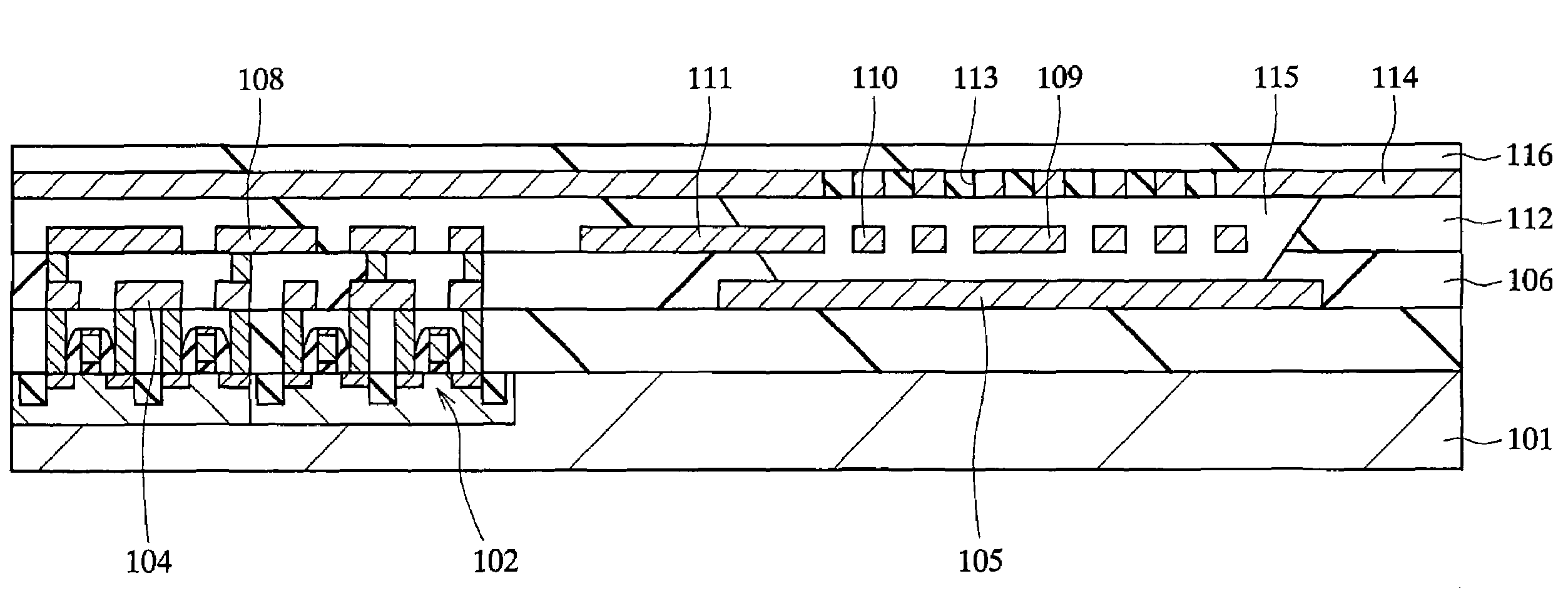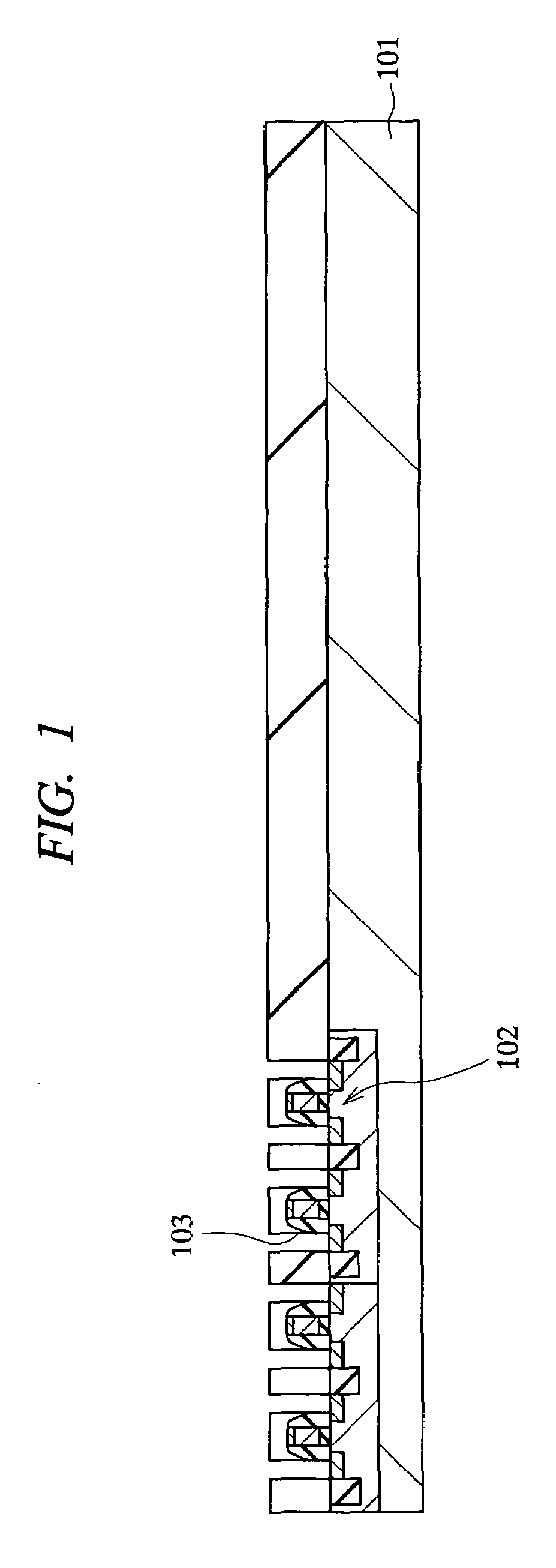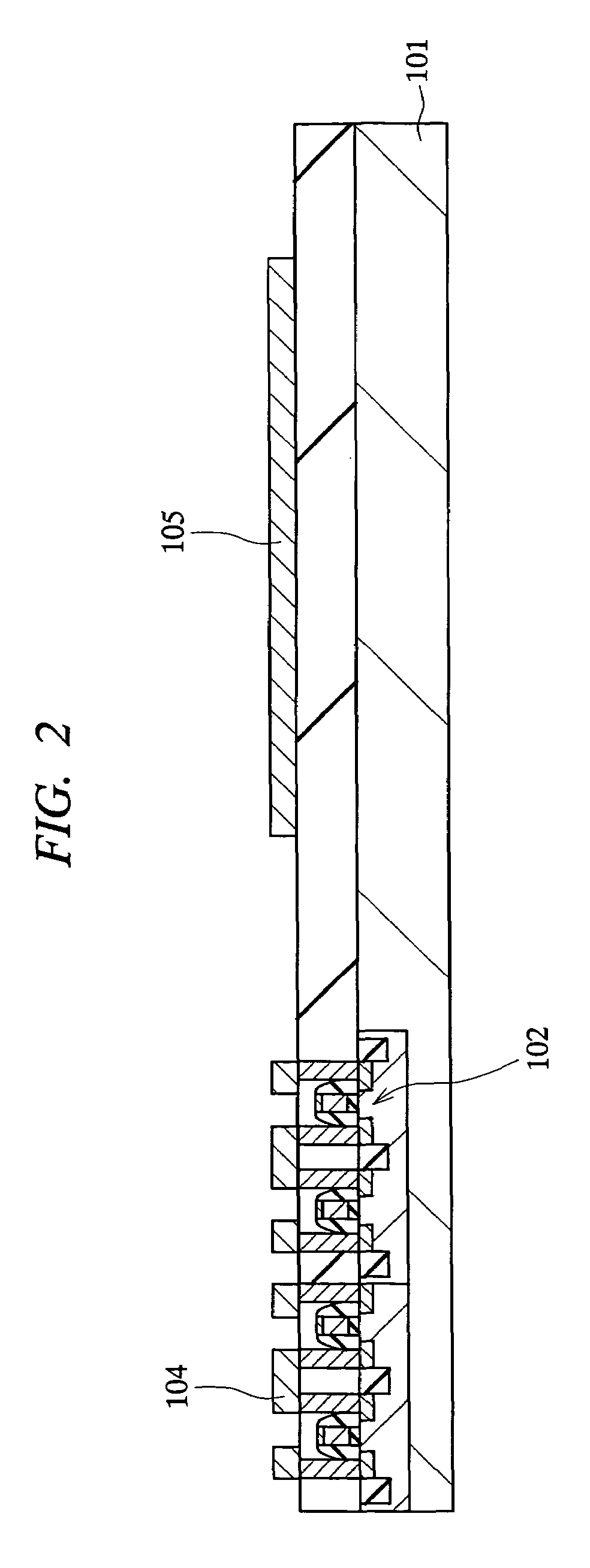Integrated micro electro-mechanical system and manufacturing method thereof
a micro electromechanical and manufacturing method technology, applied in the direction of resilient suspensions, inflated body pressure measurement, chemical vapor deposition coatings, etc., can solve the problem of difficult miniaturization of the entire system, achieve high dimensional accuracy of cavities, improve reliability, and ensure high-quality mechanical characteristics
- Summary
- Abstract
- Description
- Claims
- Application Information
AI Technical Summary
Benefits of technology
Problems solved by technology
Method used
Image
Examples
first embodiment
[0101]In the first embodiment, the case where a single axis acceleration (or vibration) sensor is formed as the MEMS will be described.
[0102]FIG. 1 to FIG. 8 are schematic diagrams (cross-sectional views) showing the manufacturing process of the integrated MEMS according to the first embodiment. First, in accordance with the normal manufacturing process of a CMOS integrated circuit, transistors 102 for signal processing of the single axis acceleration sensor and contact holes 103 are formed on a silicon substrate (semiconductor substrate) 101 (FIG. 1). Next, by using the manufacturing process of the CMOS integrated circuit, a first layer interconnect (M1 layer) 104 of the signal processing transistors 102 and an etching stopper film 105 used in the etching for forming a cavity (process described later) are formed (FIG. 2).
[0103]Next, through the normal process for manufacturing a CMOS integrated circuit, a multilayer interconnect comprised of a second layer interconnect (M2 layer) a...
second embodiment
[0120]In this second embodiment, a modification example of the above-described first embodiment will be described. First, in the second embodiment, a 2-axis acceleration sensor which detects the acceleration in two directions within chip (directions orthogonal to each other) will be described. In the acceleration sensor, it is necessary to ensure, a predetermined amount of mass of the movable mass. Therefore, the mechanical structure is formed from a pad layer with a relatively large thickness in the interconnect layers.
[0121]FIG. 12 is a schematic diagram showing the cross-sectional structure of the 2-axis acceleration sensor, and FIG. 13A and FIG. 13B are schematic diagrams showing the configuration of the major layers. In FIG. 12, a movable mass 202, an elastic beam 203 (not shown in FIG. 12) and a fixed capacitor plate (capacitance detecting electrode) 204 of the 2-axis acceleration sensor 201 are formed from the same metal layer as the pad layer 205 of the LSI in which they are...
third embodiment
[0134]In this third embodiment, the MEMS switch mounted together with the LSI will be described. In the third embodiment, the MEMS switch and the integrated circuit are monolithically mounted by using the normal manufacturing technology of a CMOS integrated circuit (interconnect process). Since the MEMS switch is formed on the multilayer interconnect of the integrated circuit, the increase of the chip area can be prevented. The MEMS switches are used to switch the circuit blocks and to switch the input / output RF devices and the antennas in accordance with the RF (Radio Frequency) wireless communication system. By doing so, the connection to low-power-consumption wireless devices and antennas with small loss can be realized.
[0135]First, the function and basic operation of a MEMS switch 300 according to the third embodiment will be described. FIG. 15A to FIG. 15C are plan views schematically showing the configuration and the basic operation of the MEMS switch 300 according to the thir...
PUM
| Property | Measurement | Unit |
|---|---|---|
| thickness | aaaaa | aaaaa |
| thickness | aaaaa | aaaaa |
| thickness | aaaaa | aaaaa |
Abstract
Description
Claims
Application Information
 Login to View More
Login to View More - R&D
- Intellectual Property
- Life Sciences
- Materials
- Tech Scout
- Unparalleled Data Quality
- Higher Quality Content
- 60% Fewer Hallucinations
Browse by: Latest US Patents, China's latest patents, Technical Efficacy Thesaurus, Application Domain, Technology Topic, Popular Technical Reports.
© 2025 PatSnap. All rights reserved.Legal|Privacy policy|Modern Slavery Act Transparency Statement|Sitemap|About US| Contact US: help@patsnap.com



